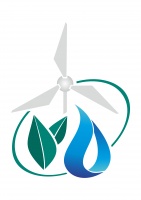Increasing water use efficiency on WUA and water user levels
| Title | Increasing water use efficiency on WUA and water user levels |
|---|---|
| Category of tools | Irrigation technique and technology |
| Usability of practice for adaptation to climate change | Moderate |
| Implemented by | Department of Water Management and Reclamation of the Ministry of Agriculture, Food Industry and Reclamation (MoAFIR) of the Kyrgyz Republic with the support of Helvetas Swiss Intercooperation |
| Used by |
Country: Kyrgyzstan Province: Jalal-Abad Region |
| Practice also applied in the following localities |
Batken and Osh Regions; Nooken, Suzak, Bazar-Korgon, Nookat and Aravan Districts |
| Local specifics |
Water User Associations (WUAs) are located to the northwest of Jalal-Abad (region’s capital) on the border of Namangan and Andizhan Regions of Uzbekistan (Kugart River Valley, 1,200 m ASL, northern tail of the Fergana Valley). |
| Photos |
|
| Practice usage period |
Start date: 01.01.2009 End date: 31.12.2017 |
| Problem solved through this practice |
Low water use efficiency on WUA and farm levels |
| Tools used in the practice |
Technical tools: Effective water use technologies, modern technologies of irrigation water management. Cognitive tools: Consultations by Helvetas Swiss Intercooperation and local experts, capacity-building training seminars. |
| Description of the practice and its results |
Actions: Capacity building:
Partnership building:
Results: The practice promoted building of WUA capacities, increasing the efficiency of irrigation water use on farm level as well as building farmer capacities on water resources management. |
| Lessons learnt and recommendations made |
Lessons learnt: Water shortage and inefficient water use (field/farm level) pose obstacles to farmers receiving high yields and incomes from agricultural production. Excessive irrigation in upper-stream areas and water shortage in lower-stream areas, although a paradox, occur simultaneously as farmers lack knowledge on actual crop water requirements and water-efficient irrigation. Recommendations: The practice should be scaled-up across the country. It is also necessary to conduct regular trainings to raise awareness among farmers and build their capacities on applying advanced irrigation methods providing them with an opportunity to manage scarce water resources more effectively. |
| Source of practice |
|
| Brief information on the project |
Project title: Effective Water Use (SEP) (Kyrg. “Suunu effektivduu paidalanuu”) Project duration: 2009-2017 (9 years). Project goal and objectives: enhance water resources management frameworks and capacities in terms of rendering services to farmers with the aim of increasing their incomes, food security and capabilities to adapt to social, economic and climate risks; improve farmers knowledge and their abilities to apply advanced field-level irrigation and water collection methods providing them with an opportunity to manage scarce water resources more effectively. Project beneficiaries: water users (farmers) and WUAs. Project implementer: Department of Water Management and Reclamation of the MoAFIR of Kyrgyzstan |
| Funding source | Helvetas Swiss Intercooperation, Swiss Agency for Development and Cooperation |
| Information sources |
|
| Form submission date | 18.05.2018 |
| Print Compare with other practice |




